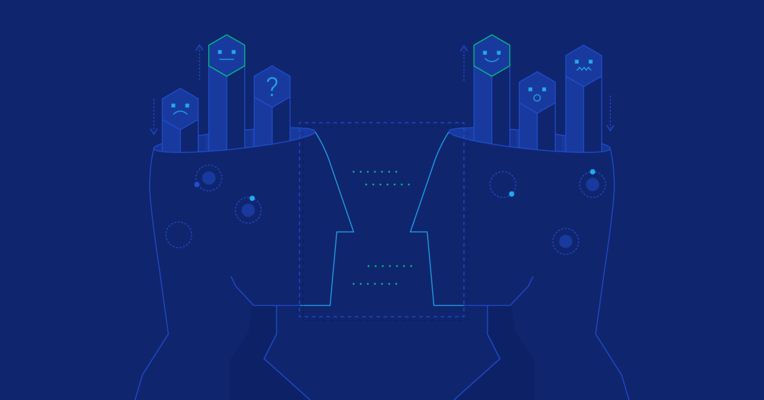Introduction
In the fast-paced world of technology and innovation, businesses are continually striving to create products and services that not only meet functional needs but also resonate with users on a deeper, emotional level. The role of emotional design has become increasingly prominent as companies recognize the profound impact it can have on user and customer satisfaction. This article delves into the significance of emotional design, exploring how it contributes to creating meaningful connections between users and products or services.
Understanding Emotional Design
Emotional design is a concept that goes beyond the mere aesthetics of a product or service. It encompasses the intentional incorporation of emotional elements into the design process, aiming to elicit positive feelings, connections, and responses from users. The foundation of emotional design lies in the understanding that human emotions play a pivotal role in shaping perceptions, decisions, and overall satisfaction.
- Establishing a Personal Connection
One of the key aspects of emotional design is the ability to establish a personal connection between the user and the product or service. When users feel a connection, they are more likely to develop a sense of loyalty and attachment. Design elements such as relatable imagery, storytelling, and personalized experiences contribute to fostering this emotional bond. For example, a website that tells the story of its brand or product journey in a visually engaging manner can create a sense of shared experience, making users feel more connected.
- Enhancing User Experience
Emotional design goes hand in hand with improving the overall user experience. Aesthetically pleasing interfaces, intuitive navigation, and thoughtful interactions contribute to a positive emotional response. When users find a product or service not only functional but also enjoyable to use, their satisfaction levels increase. Designing with the user’s emotions in mind can lead to more user-friendly interfaces, reducing frustration and increasing overall satisfaction.
- Building Brand Identity
Emotional design plays a crucial role in shaping and reinforcing a brand’s identity. Brands that evoke positive emotions through their design elements, color schemes, and overall visual language can create a lasting impression on users. Consistency in design that aligns with the brand’s values helps in building a strong and recognizable identity. Customers are more likely to choose a brand that aligns with their values and evokes positive emotions.
The Elements of Emotional Design

To effectively incorporate emotional design into the user experience, designers must consider various elements that can evoke specific emotions. Some key elements include:
- Color Psychology
Colors have a profound impact on emotions. Designers leverage color psychology to evoke specific feelings and responses from users. For instance, warm colors like red and orange may elicit feelings of excitement and energy, while cool colors like blue and green can create a sense of calm and trust. Thoughtful color choices can significantly influence the emotional tone of a design.
- Typography and Font Selection
The style and choice of fonts can convey a brand’s personality and influence the emotional response of users. Playful and whimsical fonts may create a sense of fun, while clean and professional fonts can evoke trust and reliability. Typography plays a crucial role in delivering the intended message and shaping the overall user experience.
- Imagery and Visual Elements
The use of imagery, illustrations, and other visual elements can evoke powerful emotional responses. High-quality and relatable images can create a sense of authenticity, helping users connect with the brand or product on a personal level. Visual elements can also be used to tell a story, guiding users through a narrative that resonates with their emotions.
Case Studies on Emotional Design Success
- Apple Inc.
Apple is a prime example of a company that has mastered the art of emotional design. From the sleek and minimalist design of its products to the emotionally resonant advertising campaigns, Apple consistently prioritizes the user’s emotional experience. The packaging, user interfaces, and even the tactile feel of Apple devices contribute to a sense of luxury, exclusivity, and innovation.
- Airbnb
Airbnb has revolutionized the hospitality industry by focusing on emotional design. The platform’s user interface is not only functional but also visually appealing and emotionally engaging. Airbnb uses a combination of vibrant colors, high-quality imagery, and personalized recommendations to create a sense of adventure and exploration for its users. The emotional connection is further strengthened through user reviews and stories that highlight unique and memorable experiences.
Measuring the Impact of Emotional Design
Quantifying the impact of emotional design on user and customer satisfaction can be challenging, as emotions are subjective and can vary from person to person. However, businesses can employ various methods to gauge the effectiveness of emotional design strategies:
- User Surveys and Feedback
Collecting user feedback through surveys and reviews can provide valuable insights into the emotional responses elicited by a product or service. Questions can be tailored to assess users’ feelings, perceptions, and overall satisfaction, allowing businesses to understand the emotional impact of their design choices.
- User Testing and Observation
Conducting user testing sessions and observing user behavior can reveal how individuals interact with a product or service on an emotional level. Designers can identify moments of delight, frustration, or confusion, helping refine the emotional design elements for an optimal user experience.
- Analytics and User Metrics
Analyzing user metrics, such as bounce rates, time spent on a website, and conversion rates, can offer quantitative data on user engagement and satisfaction. Positive changes in these metrics following the implementation of emotional design strategies may indicate a successful impact on user satisfaction.
Challenges and Considerations
While emotional design holds immense potential for enhancing user and customer satisfaction, there are challenges and considerations that designers must navigate:
- Cultural Sensitivity
Emotional responses can be influenced by cultural factors, and designers must be mindful of creating designs that resonate across diverse cultural backgrounds. Understanding cultural nuances is essential to avoid unintentional misinterpretations and ensure inclusivity.
- Balancing Functionality and Emotion
Emotional design should complement and enhance functionality rather than overshadowing it. Striking the right balance between aesthetics and usability is crucial to prevent the sacrifice of functionality for the sake of emotional appeal.
- Evolving Trends and Preferences
User preferences and design trends are constantly evolving. Staying attuned to the changing landscape is essential to ensure that emotional design strategies remain relevant and resonate with the target audience.
Conclusion
In conclusion, the role of emotional design in enhancing user and customer satisfaction is a dynamic and influential aspect of modern design practices. By understanding the emotional needs and responses of users, businesses can create products and services that go beyond meeting functional requirements, fostering meaningful connections and lasting impressions. As technology continues to advance, emotional design will remain a vital component in creating experiences that not only fulfill practical needs but also enrich the human connection between users and the products they interact with. Embracing emotional design is not just a design choice; it is a strategic investment in building relationships and fostering customer loyalty in an increasingly competitive market.

